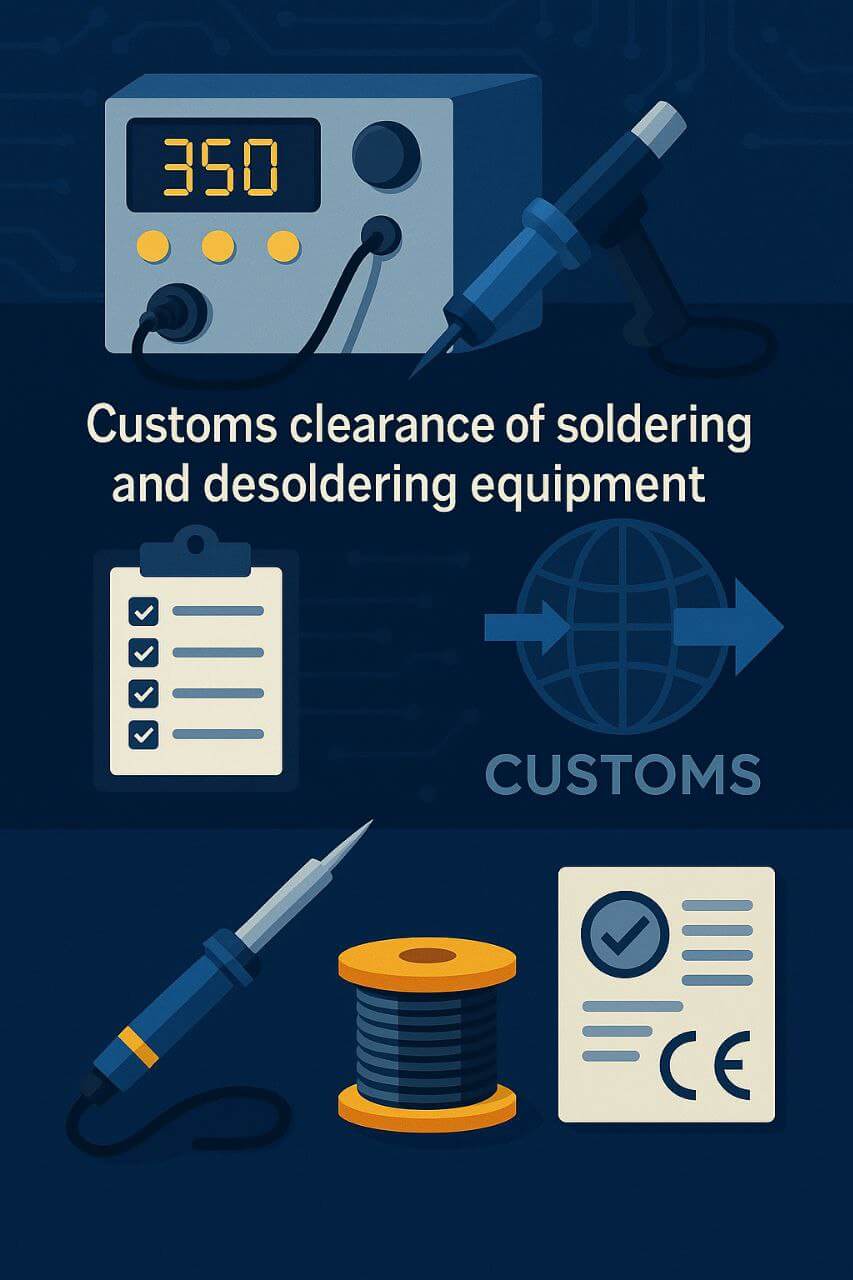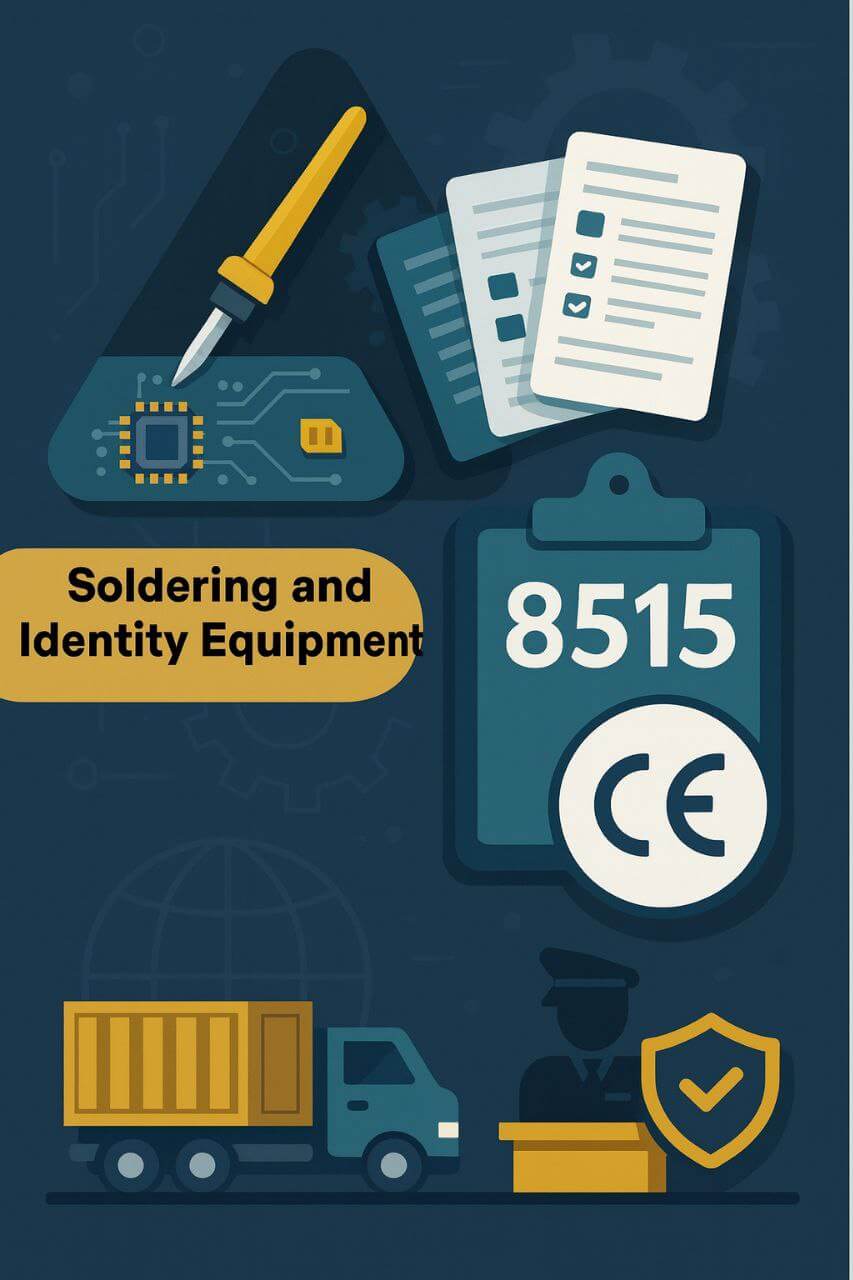
For estimating the time and cost of clearing soldering equipment and soldering irons (hand soldering iron, reflow, wave, automated machines), contact the experts at Saba Tarkhis.
Immediate Free Consultation1) Specialized applications of soldering equipment and soldering irons across industries
2) Key expert notes for customs clearance
1. Customs tariff (HS Code)
2. Required documents for clearance
3. Accurate tariff determination
4. Quality control and standards compliance
Clearing soldering equipment and soldering irons requires a precise approach and specialized knowledge. Every stage—from HS classification to quality control and standards—demands attention to detail and cooperation with experienced experts. These key points help importers avoid customs issues and clear their goods efficiently and at minimum cost.
3) Specific import and export conditions
Exports from Iran: Owing to notable growth in the electronics industry, Iran has the potential to export soldering equipment and soldering irons to neighboring and regional countries. Iraq, Afghanistan, and Central Asian countries are among the export destinations for these products.
4) Import/export volumes and the global market
5) HS Code and customs classification
| Item | Short Description | HS Code |
|---|---|---|
| Soldering equipment and soldering irons | Soldering tools/reflow/wave/hand soldering iron | 8515 |
Exact subheading depends on device type (manual or automated), power, temperature control, industrial/lab application, and origin.
Need HS 8515 classification, CE, and document preparation? Our team manages the entire case end-to-end.
Submit Proforma Request
Frequently Asked Questions
What is the HS Code for soldering equipment and soldering irons?
They are generally classified under chapter 8515; subheadings depend on type (manual/automated), power, and application.
Which documents are required for clearance?
Proforma and Commercial Invoices, Packing List, Bill of Lading, Certificate of Origin, and for European origin, safety/quality certificates such as CE.
How do we determine the correct tariff?
By reviewing technical specifications (power, temperature control type, application) and matching with 8515 subheadings; using a tariff specialist is advised to avoid disputes.
Special customs clearance services by Saba Brokerage
Saba Brokerage, with years of experience in customs clearance, offers special services for importing and clearing soldering equipment and soldering irons. These comprehensive services are tailored to customers’ specific needs so that the clearance process is carried out quickly and accurately.
Specialized consulting: Our expert team, fully versed in customs laws and regulations, guides you in choosing the best clearance methods and accurately determining the tariff. This consulting helps you avoid extra costs and potential issues.
Facilitating document preparation: We assist in preparing and drafting the necessary documents for clearance, including Commercial Invoices, Packing Lists, Certificates of Origin, and other required papers. With these services, you can be confident that all documents will be prepared correctly and on time.
Clearance process follow-up: From the moment goods enter customs until release, our team continuously follows up the clearance stages. This follow-up ensures your goods are cleared in the shortest possible time and without delay.
Post-clearance services: Our services continue after clearance. By providing advice on warehousing, distribution, and even re-export, we help you get the most out of the clearance process and manage your goods efficiently.
Use of electronic systems: By using advanced electronic systems, the clearance process is handled faster and more accurately. These systems allow you to track clearance stages online and receive real-time reports.
By offering comprehensive, specialized services, we ensure your customs clearance process runs smoothly and without problems. By understanding your needs and providing suitable solutions, we help you import or export your goods at the lowest cost and in the shortest possible time.
Contact our experts for more information.
.png)
